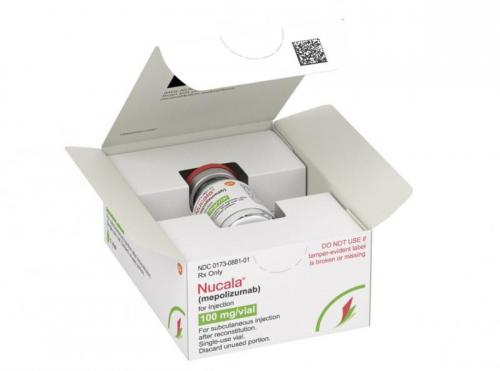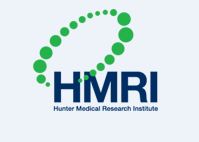The Australian Government is now in caretaker period. During this time, updates on this website will be published in accordance with the Guidance on Caretaker Conventions, until after the election.
Severe asthma is a life threatening and global health problem affecting about 30 million people. Prevalence is increasing, as is the physical and financial burden of disability.
Hunter Medical Research Institute (HMRI) facilitated the development of a targeted and effective use of the drug mepolizumab (trade name Nucala). This work is the result of over two decades of research investment by NHMRC and others in research on the mechanisms and subtypes of asthma.
A landscape format version of this case study is available as a PDF from the Downloads section below.
Origin
Ten per cent of patients with asthma have severe symptoms which account for nearly 60% of Australia’s total asthma healthcare spend. Mortality rates are similarly disproportionate. Conventional inhaled therapies often do not help these patients, which has led to the search for alternatives.
In the late 1980s and early 1990s, researchers found that a type of white blood cell called an eosinophil was increased in people with severe asthma. In 1996, a group led by Laureate Professor Paul Foster and Professor Ian G. Young at the Australian National University (ANU) discovered that increased numbers of eosinophils could be eliminated by blocking a cell protein called Interleukin 5 (IL-5).
In the United Kingdom (UK) during the 1990s, pharmaceutical firm GlaxoSmithKline (GSK) commercially developed an antibody called mepolizumab to block IL-5; however early clinical trials did not show definitive results. Independently, Professors Peter Gibson (HMRI) and Freddy Hargreave (McMaster University, Ontario) began their work with asthma subtypes while working in Ontario during the late 1980s. Along with Professor Ian Pavord (University of Leicester) they then developed more precise sorting criteria for patients undertaking clinical trials and were able to show exceptional results for severe asthmatics using mepolizumab.
© GlaxoSmithKline
From the cusp of being shelved, mepolizumab (Nucala) was listed in 2017 with Australia’s Pharmaceutical Benefits Scheme (PBS).
Grants and Investment
NHMRC
NHMRC has funded HMRI’s Respiratory Research Group through various Project, Program, Equipment and Centres of Research Excellence (CRE) Grants, and Fellowships, including:
- Project Grants: 1991, 1994 and 2009
- Program Grant: 2003
- CRE Grants: Woolcock Institute’s CRE in Respiratory and Sleep Medicine, 2005; and University of Newcastle’s (UON) CRE in Severe Asthma, 2015
- Practitioner Fellowship: Professor Peter Gibson, 2004
- Translating Research Into Practice Fellowship: Professor Vanessa McDonald, 2015.
Other grants and investments
- Department of Industry, Innovation and Science, Cooperative Research Centre (CRC) for Asthma and Airways: 2005
- Australian Research Council (ARC) grants: 2008 and 2010
- Funding for IL-5 and related studies from HMRI, UON and private funding (Foster)
- Funding for asthma classification research from UON and HMRI (Gibson)
- Funding from HMRI/John Hunter Charitable Trust to study the inflammatory mechanisms of airways disease (Wark)
- Funding from Asthma NSW for Gibson’s early asthma classification studies and Foster’s preclinical proof-of-principle investigations
- Private investment from pharmaceutical company GSK for drug development.
Collaborations
Conceiving and formulating, then salvaging mepolizumab has been a feat of global collaboration involving researchers across Australia (HMRI, UON, ANU, Curtin University), the United States (Mayo Clinic, Harvard, Rochester) and the UK (Imperial College, Cambridge University, University of Leicester), along with McMaster University, Canada, University of Tokyo, Japan, and others.
Curtin University’s Professor Colin Sanderson and colleagues published initial data in 1990 linking IL-5 with eosinophils. From 1996 onwards, Foster, Young and Professor Joerg Mattes performed extensive work on the IL-5 molecule, both at ANU and HMRI.
GSK commenced Phase I trials for mepolizumab in 2007, while Pavord began his collaboration with Gibson on patient sorting criteria. Australian patients were recruited for this phase. A larger Dose Ranging Efficacy And safety with Mepolizumab (DREAM) trial was undertaken in 2012 at 81 centres in 13 countries.
Several global, collaborative trials continued to completion over this time – further demonstrating long-term efficacy and safety.
HMRI affiliated researchers are from the UON and Hunter New England Health. HMRI’s Respiratory Research Group played a pivotal role in establishing anti-IL-5 as the new generation of treatment approaches for asthma.
Trials and Results
GSK conducted early trials of mepolizumab with a cohort of general asthma patients before suspending trials due to poor results. However, Gibson and his team believed further investigation was warranted, given mepolizumab’s proven ability to decrease eosinophil levels, as demonstrated by Foster and others.
From 2009, pivotal Phase II studies for mepolizumab focused on the precise selection of suitable patients with severe asthma, finding that more than 50% responded positively.
The DREAM trial confirmed mepolizumab’s safety and efficacy for selected patients with severe eosinophilic asthma. International Phase III trials confirmed this efficacy and benefits. Gibson and HMRI were investigators in these trials. Numerous trials to Phase IV have since been completed.
The NHMRC-funded CRE in Severe Asthma partnered with GSK for the Phase IV Australian Mepolizumab Registry, which enables clinicians to document patient eligibility for mepolizumab and possible side effects. Gibson is Principal Investigator in the ongoing Australian Mepolizumab Registry.
Following PBS listing in January 2017, an evaluation program is assigning patients to receive monthly injections.
Outcomes and Impact
Mepolizumab is now a life-changing medicine for many of the estimated 250,000 Australians with severe asthma. Modelling by the HMRI Health Research Economics team shows that the direct health care cost savings that would flow from better targeted treatment for asthma in Australia could be up to $1.3 billion per annum.
Professor Peter Wark is currently comparing the efficacy of mepolizumab with omalizumab (an allergen medication) in a multicentre Australia-New Zealand trial through the CRE in Severe Asthma. Mattes (HMRI) is conducting some of the first paediatric clinical trials of anti-IL-5 treatment.
Other key outcomes
- Professor Jodie Simpson at HMRI, with Gibson, developed a new ‘gold-standard’ assessment process for eosinophilic inflammation to improve diagnosis and outcomes.
- HMRI-based biologist Dr Katie Baines has identified and patented a panel of six genetic biomarkers to further categorise a patient’s inflammation characteristics.
- The CRE in Severe Asthma has developed resources (including the Severe Asthma Toolkit) to improve knowledge and skills among clinicians.
- McDonald has identified 24 treatable traits through the Severe Asthma Registry that can predict future attacks in severe asthma.
- With further NHMRC funding, Wark and McDonald are defining methods of therapy delivery in clinical practice via new models of care.
Timeline
| Date | Event |
|---|---|
| 1986 | Phenotyping asthma subtypes; discovery of the biological activity of IL-5 |
| 1990 | Tools developed to detect IL-5 in asthma samples |
| 1991 | NHMRC Grant |
| 1994 | Asthma NSW funding |
| 1994 | NHMRC Grant |
| 1996 | Pre-clinical models developed to determine role of IL-5 and its receptor in asthma |
| 2000 | First in human trials |
| 2003 | NHMRC Grant |
| 2004 | NHMRC Fellowship (Gibson) |
| 2005 | Department of Industry, Innovation and Science CRC funding |
| 2005 | NHMRC Grant |
| 2006 | Four subtypes of asthma characterised |
| 2007 | UK/US trial failed to determine efficacy of anti-IL-5 |
| 2008 | ARC Grant |
| 2009 | Selection criteria redefined for drug clinical trial |
| 2009 | NHMRC Grant |
| 2010 | ARC Grant |
| 2012 | Clinical trial demonstrated safety and efficacy of drug |
| 2015 | NHMRC Grant |
| 2015 | Six biomarkers identified for severe asthma |
| 2016 | Phase IV study The Australian Mepolizumab Registry established at HMRI |
| 2016 | NHMRC Fellowship (McDonald) |
| 2017 | Mepolizumab listed on PBS |
| 2018 | Severe Asthma Toolkit for clinicians |
| 2018 | Ongoing trials funded by GSK |
Researcher profiles
Laureate Professor Paul Foster
Laureate Professor Foster is Professor and Chair of Immunology, School of Biomedical Sciences & Pharmacy at UON, Co-Director of the HMRI Viruses, Infections/Immunity, Vaccines and Asthma (VIVA) research group, and the UON’s Priority Research Centre for Healthy Lungs. Foster is a global leader in molecular and cellular immunology and preclinical models of respiratory disease. He explores how inflammation, infection, immune responses and genetic factors contribute to the development of respiratory diseases. Foster was awarded both the Research Medal of the Thoracic Society of Australia and New Zealand, and the NSW Premier’s Prize for Excellence in Biological Sciences (human and animal health) in 2012.
Professor Peter Gibson
Professor Gibson works as a respiratory physician and as a clinical scientist investigating the mechanisms and treatment of asthma, chronic obstructive pulmonary disease, cough, and other airway disorders. He is a concept leader who has developed innovative approaches around inflammatory subtypes of asthma and cough, airway biomarkers, and multidimensional assessment and management of complex airway disorders such as severe asthma. His peers have awarded Professor Gibson several research medals including the European Respiratory Society Gold Medal for Excellence in Asthma Research and elected him as the president of the Thoracic Society of Australia and New Zealand (2015-6).
Professor Vanessa McDonald
Professor McDonald, Co-Director of the NHMRC CRE in Severe Asthma and research leader in the UON’s Priority Research Centre for Healthy Lungs, is developing new treatment strategies to mitigate risk factors associated with severe asthma and Chronic Obstructive Pulmonary Disease. Her research is centred around individualised, targeted approaches to severe asthma. Professor McDonald developed the mepolizumab protocol for the CRE in Severe Asthma.
Professor Peter Wark
Professor Wark is a senior staff specialist in Respiratory and Sleep Medicine at John Hunter Hospital, Co-Director of the Priority Research Centre for Asthma and Respiratory Diseases and a Fellow of the Thoracic Society of Australia and New Zealand. He has a specific research focus on respiratory viruses such as rhinovirus and was among the first to demonstrate that viral infection was the most common trigger for severe asthma. He is running extensive tests on bio-banked samples from patients, linking these data with clinical presentation of the disease.
Professor Jodie Simpson
Professor Simpson is Deputy Director of UON’s Priority Research Centre for Asthma and Respiratory Disease. Her research focuses on the inflammatory biomarkers of airway disease and she has a particular interest in innate immune pathways and their role in airways diseases. Simpson has developed several important assays for the assessment of inflammatory mediators in airway secretion and continues to work on assessment of novel markers of airway inflammation.

